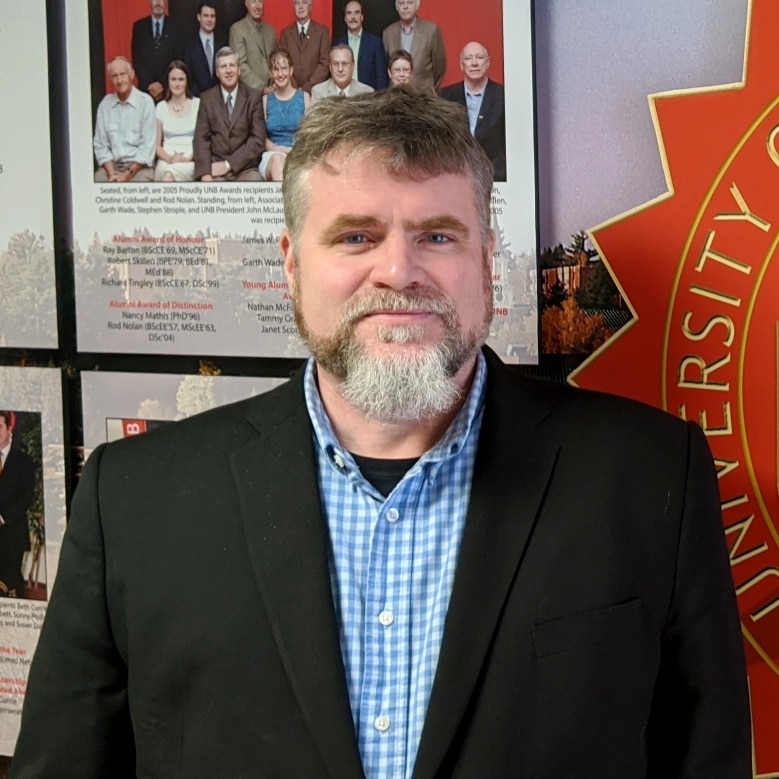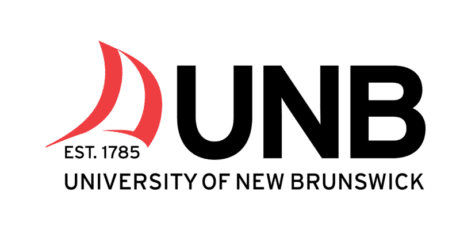Shane Nason
University of New Brunswick
Shane Nason is the Intellectual Property Manager with the Research and Innovation Partnerships team in UNB’s Office of Research Services (ORS). He has Bachelor of Business Administration and Master of Science in Engineering degrees from UNB and worked for 5 years in the IT industry as an instructional designer and project manager before joining UNB in 2000. Shane has held his current position for over a decade, providing intellectual property advice, services, and management to researchers on both the UNB Fredericton and Saint John campuses. He is primarily involved in the front end of the University’s commercialization process, which involves managing invention disclosures, completing preliminary IP assessments, and coordinating patent and trademark filings. He also oversees UNB’s IP portfolio and reviews and negotiates IP terms in research and commercialization agreements. Shane has been based on the UNB Saint John Campus since 2005. (Research Partnerships website here)
What did you do before joining UNB?
I have an undergrad in Business Administration and then I did a graduate degree (a Master of Science in Civil Engineering with a focus on Transportation Policy and Planning) – both from UNB. The graduate degree was cross discipline, so I did take engineering courses but I’m not an engineer, and you certainly wouldn’t want me designing any bridges.
After my Masters I worked a few jobs prior going back to work at UNB. I worked at the Policy branch of the New Brunswick Department of Transportation, writing railway regulations and assisting with speech writing for the Minister of the Department.
After that I was a coordinator/manager with a B2B (business-to-business) startup based in Fredericton that delivered computer-based training to its clients. We’d create training for anything from soft skills such as presentation or telephone skills, to more detailed courses on how to write in certain programming languages.
And on the personal side, my wife ran an antiques and collectibles store in Fredericton for a number of years, so I was the backup and would help with that when she needed assistance.
That’s quite the resume! What interested you about the role at UNB?
Initially when I started at UNB, which was in 2000, I wasn’t so focused on the intellectual property side, I was a technology transfer analyst. What really interested me about the position was the variety in the day-to-day—and I think this is why I fit the bill for UNB, as I had a diverse skillset with some business, engineering, and computer science background.
Back then at UNB, technology transfer and commercialization was done on an ad-hoc basis, with more of a focus on contracts. However, in 1999 UNB obtained some funds to formalize an Industry-Government Services office within its Centre for Research and Development Services (CDRS).
One of my first projects here, working with a colleague at the Atlantic Canada Opportunities Agency (ACOA), was to set up the first commercialization event for the university, to connect both the business and research community. Stakeholders suggested that we could at best expect around 25 to 30 attendees, but we ended up having over 125 people sign up. So, it became a much larger event, and one of our biggest deals, Q1 Labs, came from that event.
I did a lot of industry liaison in the early days, and by default (with a two-person office), I was the one coordinating patent filings at the time. So, that is what I started out as; I eventually became a knowledge transfer officer, and then with the departure of the office’s director in 2009, I started to focus more on IP management.
What is your current role at UNB?
My official title today is Intellectual Property Manager. I’m mostly involved in the front end, working on things like invention disclosures, coordinating the preliminary IP/Patent assessments, drafting internal assignment agreements, and overseeing UNB’s IP portfolio. When I first started, I would have been putting this all together from start to finish for a particular technology, but now one of our IEP’s will take on the market assessment side of things, as well as licensing and commercialization discussions and negotiation, and we have Agreements Officers who assist in drafting and executing related agreements.
We’ll assess projects internally and have a Go/No Go discussion, looking at factors like if it’s too early stage, if the market’s too small, or other issues, and help find the right path for an invention. The two main types of IP I work with are patents and trademarks, but any or all types of IP protection can arise on any given project.
In what ways has your role and institution it changed/evolved over the years? And how does the Springboard Network come into play?
Early on our focus was on just establishing everything to get it going, but then with each successful (Springboard) phase, it’s grown. There’s more collaboration, which has led to a broadening of the areas that we work in. Historically, UNB was involved mostly in the physical sciences and computer science, but that has expanded over the past number of years through collaboration with other institutions. And there’s been quite an expansion of funding programs we have available to our researchers.
So now, with a network of these kinds of offices established, when an opportunity comes up, we’ll look into it internally to see if we can help, but if we don’t have the expertise, we can pass it on to other institutions or collaborate and see how we could work together on a problem.
What sort of opportunities/value do you see in doing this work?
We ensure that these technologies don’t just sit on the shelf. Again, with Q1 Labs, that project showed that really big successes can come out of smaller institutions when you put the proper processes and resources in place to move them along.
And on the university side of it, yes, we do help move technologies out of the institution, but one of the biggest things that universities transfer is the students, who then go on to work for these companies and get that experience. We end up sending highly qualified individuals to these companies who know how to further expand their business capacity and technologies.
What benefits do you see in being part of the Springboard network?
The Springboard model works well in Atlantic Canada. There is a high level of networking and collaboration that lasts in the long term. The collaboration and networking among members is key, whether it’s just throwing ideas to one and other, a personal one-on-one, or inter-institutional agreements.
For me, obviously the additional Innovation Mobilization (IM) funding that Springboard provides helps bridge funding gaps in those early stages. And the network also helps us provide metrics to our stakeholders that show the value we are adding by doing this work. It’s given us an avenue to measure things like our licensing agreements, startups worked with, company interactions, industry engagement etc., and in looking at those metrics you can quickly see the value we’ve generated. And the support from Central Office is invaluable.


